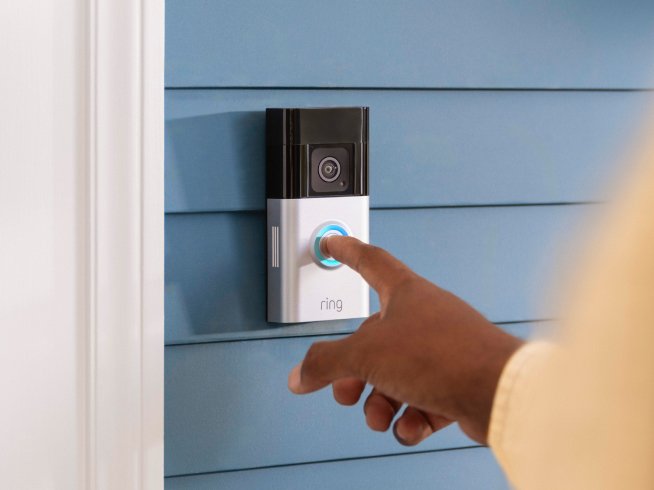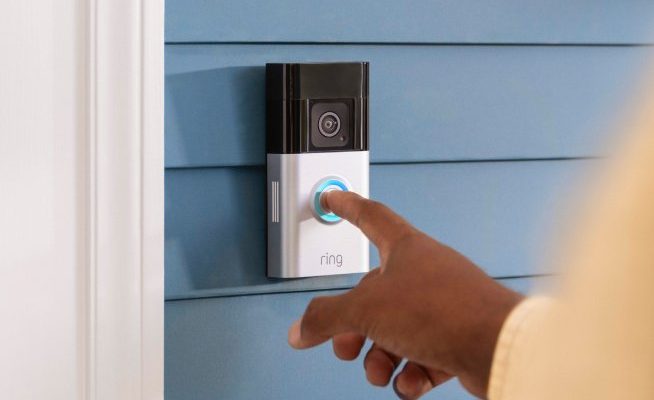
Think of a warranty like the little umbrella you keep stashed next to your door, just in case a storm pops up. It’s not always front-of-mind, but when your Ring remote won’t sync or your cameras go haywire, you’re suddenly very glad it’s there. A lot of people—maybe even most—don’t really look at warranty details until there’s a problem. But knowing *what’s actually covered* (and what isn’t) can save you time, money, and a few headaches.
Let’s walk through exactly how the Ring warranty works, what you can expect, and a few real-world situations where the coverage makes all the difference.
What’s Actually Covered by the Ring Security Systems Warranty?
Here’s the thing: not all warranties are created equal, and Ring’s policy has its own set of rules. At its core, the Ring Security Systems warranty covers *defects in materials and workmanship* for a set period (usually one year from the date of purchase). So, if your Ring keypad refuses to pair or a sensor goes dead with a fresh battery, that’s likely in warranty territory.
What does this mean in plain English? If you bought a brand new Ring Alarm system and something goes wrong due to how it was made—not how it was used—then Ring promises to repair or replace the part for free, as long as you’re within the warranty period. It’s kind of like buying peace of mind, knowing you’re protected against factory slip-ups.
*But don’t get too comfortable just yet.* The warranty won’t save you if you drop your Ring remote in a puddle or tinker with the wiring. Normal wear-and-tear, accidental damage, or using third-party accessories can put you outside the coverage zone. It’s important to keep the original receipt handy and make sure you follow Ring’s setup, syncing, and reset instructions to the letter.
How Long Does the Ring Warranty Last?
Honestly, the length of your Ring warranty depends on what you bought and how you bought it. Most core devices—including the Ring Alarm base, sensors, and remotes—come with a standard one-year limited warranty. That’s pretty common across the industry. But here’s where it gets interesting: if you subscribe to Ring Protect Plus (their monitoring plan), your device warranty gets *extended for as long as you keep your subscription active*.
Let me explain with an example. Say you set up a Ring Alarm system today and add Ring Protect Plus for professional monitoring. As long as you keep paying for that plan—even if it’s five years down the road—your warranty coverage keeps rolling. That’s a decently generous perk if you’re planning to use Ring as your main line of defense.
It’s worth noting that you can’t just subscribe later and retroactively extend the warranty. The Protect Plus plan must be active before your original one-year warranty expires. So if you’re someone who loves extra security, this little “hidden bonus” might tip the scales.
What Happens If Something Breaks? The Warranty Claim Process
You might be wondering, “What do I actually do if my Ring remote won’t sync or my system keeps losing power?” The warranty process is pretty straightforward, but a few steps make all the difference in how smoothly it goes.
- Gather your proof of purchase. Ring will want to know when and where you bought your device. Save receipts, emails, or even screenshots from your app store account.
- Contact Ring support. Describe your issue in detail—was it a stubborn keypad, a dead sensor, or a battery that drains way too fast? Mention any troubleshooting steps you’ve tried (like resetting the device, updating firmware, or checking for code errors).
- Follow their instructions. Ring may ask you to run a few tests or send in photos. Sometimes they’ll have you try a reset or walk you through a sync process. If they determine it’s a warranty issue, they’ll approve a repair or replacement.
A quick tip: don’t try to fix big hardware issues yourself or use unofficial replacement parts. That can void your coverage in a flash. Stick to Ring’s own troubleshooting steps, and the support team will usually make things right as long as you’re in the clear.
What Isn’t Covered Under the Warranty?
Here’s where some people get tripped up. The Ring Security Systems warranty is robust when it comes to manufacturer defects, but it won’t help if the problem comes from *your* side of the fence.
- Accidental damage. If you drop your keypad, spill coffee on your sensors, or let pets chew on your motion detectors, you’re out of luck. The warranty covers only defects in materials or workmanship, not mishaps.
- Normal wear and tear. Over time, all devices get scuffed, batteries wear out, and buttons lose their spring. That gradual aging is expected—and not covered.
- Third-party accessories. Using off-brand batteries, chargers, or trying to pair your Ring device with a universal remote that’s not officially supported can void the warranty in a heartbeat.
- Unauthorized repairs or modifications. Opening up your Ring device and poking around with a screwdriver might seem like a fun project, but it’s a one-way ticket to voided coverage.
So before you go full DIY or order that sketchy battery from an unfamiliar site, remember: anything outside the official Ring ecosystem can leave you without warranty protection.
How Does the Warranty Compare to Other Smart Home Brands?
It’s natural to wonder if Ring’s warranty is better or worse than the competition. Honestly, it sits right in the middle for most categories—but with a few clever twists. For example, companies like SimpliSafe or ADT usually offer similar one-year limited warranties on their basic equipment. Some high-end competitors might promise two or even three years, but it’s not the norm.
Where Ring stands out is with the Ring Protect Plus extended coverage—a perk you don’t see everywhere. If you’re already planning to pay for professional monitoring, that rolling warranty offers more peace of mind than most rivals. On the flip side, brands with lifetime or longer warranties (rare, but out there) might win over people who hate recurring subscriptions.
And if you’re thinking of using a universal remote or mixing and matching systems to save money, just be aware: warranties almost never play nice with unsupported hacks. Keeping your devices “in the family” is usually the safest play for support and warranty claims.
Tips to Keep Your Ring Warranty Intact
Nobody wants to end up outside the warranty safety net just because of a small mistake. Here’s how to stay on the right side of Ring’s policy:
- Register your devices. Sign in to your Ring account and make sure every device is registered with the right date and details. This helps if you ever need proof for a warranty claim.
- Stick to official products and accessories. If you need a new battery or a replacement remote, buy directly from Ring or an authorized partner. Syncing with third-party or universal remotes can void coverage fast.
- Follow setup and troubleshooting guides. Don’t skip steps when pairing a new device or resetting your system. If something feels off, check the official guides or reach out to support before trying risky fixes.
- Keep your Protect Plus subscription active. If you want long-term coverage, don’t let your plan lapse—it’s what keeps the warranty rolling past the typical one-year limit.
A little bit of care up front can save you frustration (and cash) if something ever goes wrong.
What to Do When Your Warranty Runs Out
All good things come to an end—warranties included. If your Ring Security System’s warranty is about to expire, you’ve got a few options to keep your home protected.
- If you’re already on Ring Protect Plus, your coverage keeps going. No action needed—just keep the subscription active.
- If you’re out of warranty and without Protect Plus, Ring may still offer paid repair, trade-in discounts, or upgraded device kits if you reach out.
- If you want more flexibility, you could look into third-party insurance plans or smart home warranty companies, but they often come with their own fine print.
There’s no universal remote (pun intended) for extending every warranty, so weigh the cost of repair or replacement against the value of a new system, especially as tech moves fast and prices drop each year.
Why Understanding Your Ring Warranty Matters
It’s easy to dust off the box, set up your Ring alarm or camera, and forget all about the warranty paperwork. But when your system won’t pair, the code won’t reset, or batteries start acting fishy, that warranty can feel like a lifesaver.
Knowing exactly what’s covered—and what’s not—puts you in control, not at the mercy of tech support or shady sellers. You’re more likely to get real help, fast, and less likely to be caught off guard when something breaks down the line.
Think of your warranty as a quiet guardian working in the background. Most days, you won’t need it. But when trouble comes knocking, you’ll be glad you know exactly how it works, and how to make it work for you.
So, next time your Ring system acts up or you’re considering an upgrade, take a minute to review the warranty details, keep your receipts safe, and follow the rules. It’s the simplest way to give yourself a little extra peace of mind—without any surprises.
